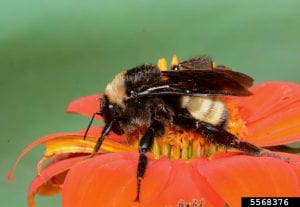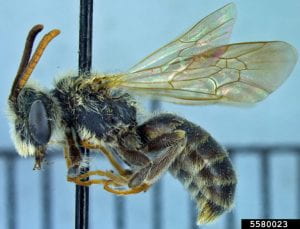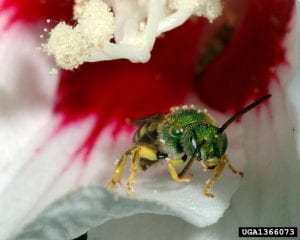This article first appeared in The Times-Herald Record on Saturday, May 11, 2019 in the Home & Garden section.
By Joe Gregoire, Orange County Master Gardener, Cornell Cooperative Extension Orange County
I’ve heard that adding carbon to the soil by mixing in charcoal is good for plants. Is this correct? Jessica from Monroe
 Great question, Jessica. And as I’ve just recently cleaned out my fireplace from the winter and wondered if I could use the ash in my garden, I’ve done a little research on the topic that I’ll share with you here.
Great question, Jessica. And as I’ve just recently cleaned out my fireplace from the winter and wondered if I could use the ash in my garden, I’ve done a little research on the topic that I’ll share with you here.
There is a long history to the practice of adding ash and charcoal to soil and is a proven method of soil improvement. The pre-Columbian Amazonian peoples developed an understanding of the importance of soil carbon as they worked to meet their agricultural needs in their hot and humid rain forest environment. Their warm, wet climate created conditions in which soil organisms quickly decomposed organic material – that was then absorbed into the rapidly growing rainforest flora. When rainforests are cleared and plowed, this soil is quickly depleted of soil carbon and susceptible to erosion, making food production difficult to sustain on the same land for more than a few years. However, archeologists have found that ancient Amazonian cropland contains large deposits of dark, rich soil called Terra Preta that was made by these ancient farmers between 2,500 to 4,000 years ago. This Terra Preta contains high amounts of charcoal created through the process of pyrolysis (burning organic material in high heat and low oxygen) which preserves up to 50% of the carbon vs. converting it into CO2 gas through complete combustion. Pyrolysis produces a very porous and stable form of organic matter through physically and chemically altering the composition of the biomass being burned.
 University studies have shown that adding charcoal (also called Biochar) to soil increases the soil’s water-holding capacity, reduces soil density, improves soil structure, and has been proven to reduce soil nutrient leaching and increase crop growth. Pre-packaged biochar can be purchased from retailers today or can be made at home by buying or building a biochar kiln for home use. Many low-cost designs can be found online and enable the conversion of biomass (wood) into charcoal to amend the soil. Biochar can be produced from a variety of materials – trimmings from woodland and yard maintenance, agricultural waste like corn stalks, and purpose grown biomass such as bamboo. The pH and composition of the biochar that is produced is directly linked to the material used to produce the biochar, so if making your own, be sure to avoid contaminants such as treated or painted lumber.
University studies have shown that adding charcoal (also called Biochar) to soil increases the soil’s water-holding capacity, reduces soil density, improves soil structure, and has been proven to reduce soil nutrient leaching and increase crop growth. Pre-packaged biochar can be purchased from retailers today or can be made at home by buying or building a biochar kiln for home use. Many low-cost designs can be found online and enable the conversion of biomass (wood) into charcoal to amend the soil. Biochar can be produced from a variety of materials – trimmings from woodland and yard maintenance, agricultural waste like corn stalks, and purpose grown biomass such as bamboo. The pH and composition of the biochar that is produced is directly linked to the material used to produce the biochar, so if making your own, be sure to avoid contaminants such as treated or painted lumber.
Biochar has many properties that have potential to enhance soil fertility and is a highly stable form of organic matter, as the 4,000 year-old Terra Preta demonstrates. Organic matter in soil is important for retaining moisture and building soil structure through aggregation, which also provides pore space for drainage. Soil organisms depend on this balance of air and water in soil to survive and thrive. With increased soil life comes increased soil nutrients to feed your plants.
If you have access to fireplace ash, this can be another ready source of charcoal and other beneficial soil amendments. Wood ash is a good source of potassium, lime, and micronutrients (which are taken up from the deep roots of hardwood trees used for firewood, such as oak and maple). It is best to add ash to the compost pile rather than directly to the garden, as the high concentration of lime can alter soil pH and may burn sensitive plants. The alkaline nature of wood ash can also have a neutralizing effect on compost, as the decomposing materials in a compost pile can become somewhat acidic. Do not use ash from a charcoal grill, as this ash may contain chemical residue from lighter fluid.
Because of the alkaline nature of wood ash, avoid using it around acid-loving plants such as azaleas, rhododendrons, and blueberries. Wood ash can also be used as a natural repellent for pests such as snails and slugs who will resist crossing a line of wood ash laid around their favorite plants (the salts in wood ash are an irritant to these soft-bodied pests). The wood ash needs to be reapplied after a rain or watering to remain effective.
Carbon in the soil is the key to soil life. Growing plants exude carbon into the soil through their roots in the form of sugars produced through photosynthesis. These exudates attract and feed beneficial bacterial, fungi and other microorganisms that live and die in the area surrounding plant roots, providing plants with nutrients they need to be healthy. Our addition of carbon to the soil, in the form of charcoal, can provide additional material for this symbiotic relationship to play out in our garden soil. And in doing so, we can play an important role in removing carbon from the air and returning it to the soil through our everyday love of gardening.
Click on the graphic below to learn more about soil health!

To learn more about the benefits of biochar and current research on biochar visit:
Biochar – Cornell University
Biochar and Compost Facilities – Cornell University
Terra Preta de Indio – Cornell University
To learn more about using wood ash as a soil amendment check out:
Best Management Practices for Wood Ash as Agricultural Soil Amendment – University of Georgia
Guide to Using Wood Ash as an Agricultural Soil Amendment – University of New Hampshire
Wood ashes can benefit gardens and lawns – Oregon State University




![stanze from Germany, Baden-Württemberg [CC BY-SA 2.0 (https://creativecommons.org/licenses/by-sa/2.0)] Mason bee on board with](https://blogs.cornell.edu/master-gardeners-cce-oc/files/2019/04/Mason_bee_apartment_building-ugwjwf-300x275.jpg)





